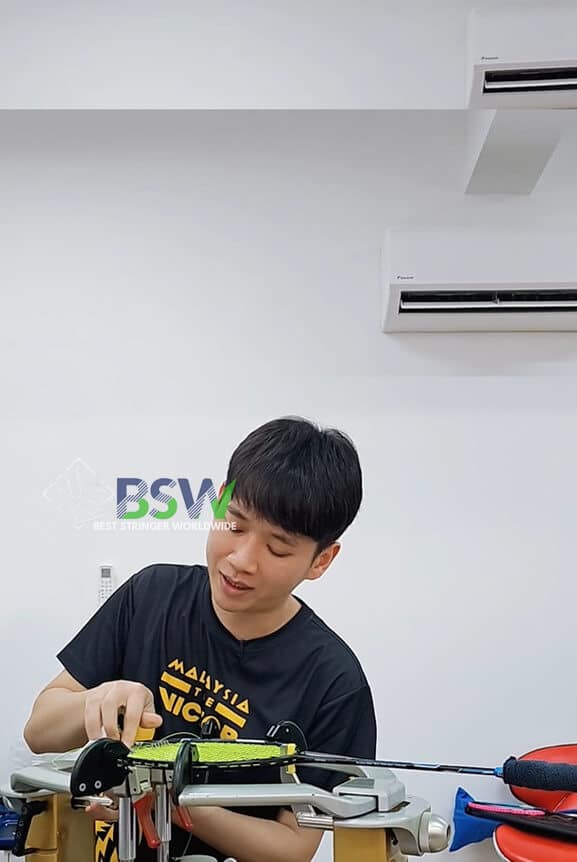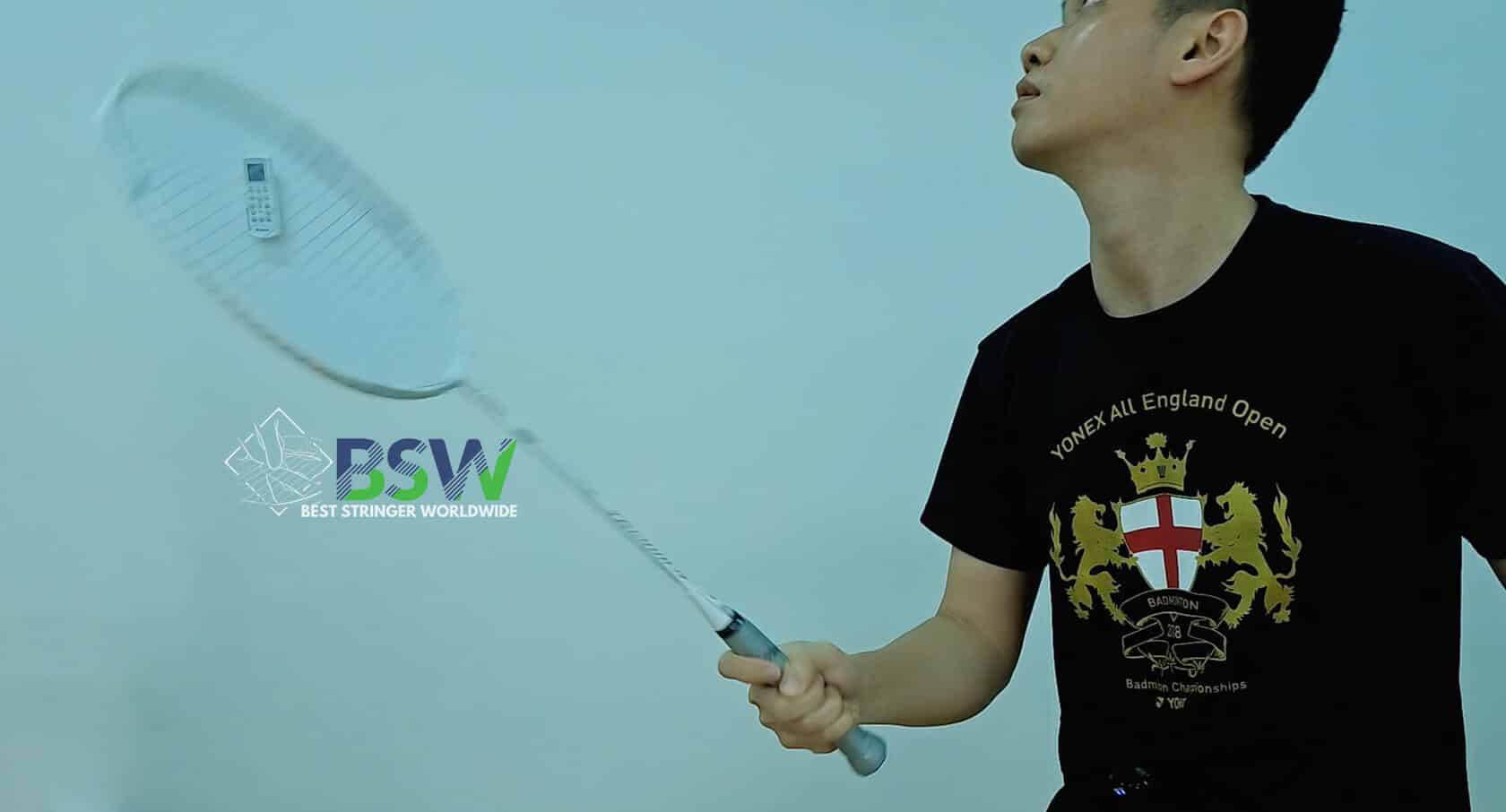When players pick up a badminton racquet, the first thing they often notice is the racquet face. This crucial component significantly impacts shot performance and is closely related to the racquet’s sweet spot – the optimal hitting area that serves as the source of power and control.
Racquet Face and Sweet Spot Quiz
Test your knowledge of racquet faces and sweet spots with this interactive quiz! How well do you understand these crucial aspects of badminton equipment?
The Importance of Racquet Face and Sweet Spot
The racquet face and sweet spot play vital roles in determining the power, control, and overall feel of your shots. When the shuttlecock makes contact with the sweet spot, players experience:
- Optimal power transfer
- Enhanced control
- Reduced vibration
- Improved comfort
These factors contribute significantly to the quality of your shots, making it easier to execute high-performance plays. This is why racquet manufacturers invest heavily in research and development to optimize the sweet spot of their products.
Racquet Face Size and Shape
Badminton racquet faces typically come in three standard sizes:
- 330 cm² (51 in²)
- 340 cm² (53 in²)
- 370 cm² (57 in²)
While the size differences may seem minimal compared to tennis racquets, they can significantly impact playing characteristics. Generally, larger racquet faces offer:
- Increased sweet spot size
- Greater power potential
- Slightly reduced control
However, the shape of the racquet head also plays a crucial role in determining its performance characteristics.
Racquet Head Shapes
There are three main racquet head shapes in modern badminton:
- Traditional oval shape
- ISO shape (isometric)
- Enlarged ISO shape
The ISO design, introduced to expand the sweet spot, has gained popularity among players. ISO heads are further categorized into two subtypes:
- “Large square head” – with 8 string holes in the squared section
- “Small square head” – with 6 string holes and a slightly larger frame
While these designs differ in appearance, their performance characteristics are quite similar. ISO-shaped racquets excel particularly in defensive play, especially when receiving smashes. This advantage has led to an increasing number of players adopting ISO-shaped racquets, with some experts considering it the future direction of badminton racquet design.
| Shape | Sweet Spot | Power | Control |
|---|---|---|---|
| Traditional Oval | Smaller | Moderate | High |
| ISO (Isometric) | Larger | High | Moderate |
| Enlarged ISO | Largest | Highest | Lower |
This table provides a quick comparison of the different racquet head shapes and their general characteristics. Keep in mind that individual racquet models may vary, and personal playing style also influences the actual performance.
The Role of the Shaft
The shaft, also known as the stem or handle, is the connecting element between the frame and the grip. It serves as one of the primary sources of power in a badminton racquet.
During a swing, the shuttlecock remains in contact with the racquet for only 4 to 6 milliseconds. In this brief moment, the shaft undergoes a process of flexing and recovery. When the swing speed of the arm and the rebound speed of the shaft’s deformation synchronize, maximum power is achieved.

Shaft Flexibility and Performance
The flexibility of the shaft greatly influences the racquet’s performance:
- Softer shafts:
- Flex more easily during the swing
- Produce larger bending amplitude
- Generate greater hitting power
- Offer reduced vibration
- Require longer recovery time
- Provide less directional control
- Less suitable for continuous smashes and net play
- Stiffer shafts:
- Generate less hitting power
- Produce more vibration
- Offer shorter recovery time
- Provide better control
- More suitable for fast-paced play and precise shots
Players should choose their shaft flexibility based on their playing style, physical strength, and personal preferences.
Shaft Flexibility Grades
Badminton racquet shafts are typically categorized into four flexibility grades:
- 8.0 (Stiff)
- 8.5 (Medium Stiff)
- 9.0 (Medium)
- 9.5 (Flexible)
Players with strong physical abilities or those who prefer an aggressive playing style should opt for stiffer shafts to enhance stability and control. Conversely, players with less physical strength or those who favor a defensive style might find more flexible shafts more suitable.
The Importance of the Bending Point
The bending point, or flex point, is the location of maximum curvature on the shaft during a swing. It’s measured as the distance from this point to the top of the frame.
The position of the bending point affects the racquet’s performance:
- Shorter distance: Faster rebound, quicker recovery to original shape
- Longer distance: Slower rebound, longer recovery time
Therefore, racquets with a lower bending point are better suited for players with fast, fluid playing styles. In contrast, racquets with a higher bending point are more appropriate for technical players who prefer control over speed.
Recent years have seen the introduction of variable-thickness shafts by major brands. These shafts feature one thick end and one thin end. If the thicker end is closer to the grip and the thinner end closer to the frame, it typically shortens the distance to the bending point. The opposite configuration lengthens this distance.
Badminton Racquet Shaft Simulator
Power: 50%
Control: 50%
Recovery Time: 50%

About Best Stringer Worldwide
Best Stringer Worldwide is a comprehensive badminton and tennis stringing education program. We provide in-depth training on stringing techniques, racquet technology, and player-specific customization. Our curriculum is designed to help stringers understand and meet the needs of all badminton players, from casual enthusiasts to competitive athletes.
Read More